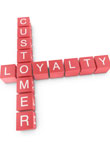By Paul Rossberger
 Top retailers often share several common traits, including a variety of offerings, type of customer and amount of space. That is why it is important for all retailers to find ways to stand out from the competition. When it comes to choosing which products to carry and how much inventory to stock, retailers need to have a pulse on their customers’ needs, maybe even before their customers know what they need. While analyzing store-specific sales and demographics data is a surefire way to understand the market at a micro level, a broader look at the psychological motivators influencing today’s consumers, what moves them, inspires them, and motivates them to buy, can give a retailer the edge it needs to attract traffic and profits.
Top retailers often share several common traits, including a variety of offerings, type of customer and amount of space. That is why it is important for all retailers to find ways to stand out from the competition. When it comes to choosing which products to carry and how much inventory to stock, retailers need to have a pulse on their customers’ needs, maybe even before their customers know what they need. While analyzing store-specific sales and demographics data is a surefire way to understand the market at a micro level, a broader look at the psychological motivators influencing today’s consumers, what moves them, inspires them, and motivates them to buy, can give a retailer the edge it needs to attract traffic and profits.
Experience breeds loyalty
New research from Forrester says that when it comes to building loyalty, people respond more to the experience they have with a retailer than with their perception of price. This is great news for retailers as bargains are not every store’s strongest selling point. The study highlights retailers such as Marshalls, Amazon, Trader Joe’s and Costco as leaders in using the customer experience to drive sales and build relationships. According to the research, customer experience accounts for 47 percent of loyalty to stores. When price or value is factored in, loyalty rises to just 47.2 percent. Clearly, a pleasant shopping experience that includes ease of access, friendly employees and the products a customer needs will help a store develop a loyal customer base.
 There are many ways retailers can tap into their customers’ soft spots and build a loyal following. A store that polls visitors for feedback on their experience or input on product selection will increase loyalty by showing customers that their opinions matter. A store can become a reliable source for products customers want and need. Travelers or commuters, for example, will be attracted to and build loyalty with a conveniently located store that stocks a broad inventory of smaller-sized items that fit easily into carry-on luggage or a personal bag, including medicines, shampoos, and other health and beauty care items.
There are many ways retailers can tap into their customers’ soft spots and build a loyal following. A store that polls visitors for feedback on their experience or input on product selection will increase loyalty by showing customers that their opinions matter. A store can become a reliable source for products customers want and need. Travelers or commuters, for example, will be attracted to and build loyalty with a conveniently located store that stocks a broad inventory of smaller-sized items that fit easily into carry-on luggage or a personal bag, including medicines, shampoos, and other health and beauty care items.
“We seem to see something like a ‘zone of consistency.’ As long as retailers are priced reasonably in line with key competitors, and their prices stay in a competitive range, improvements in customer experience are much more critical to create and sustain customer loyalty than trying to lower prices,” analyst Maxie Schmidt-Subramanian told Marketing Daily.
Point of differentiation
Bill Patterson, senior market analyst for Mintel, provides the epiphany that best connects loyalty to success. “Stopping by a convenience store is a rather ubiquitous activity,” he says in Mintel’s 2012 U.S. Convenience Store Report, which shows that 64 percent of adults visit convenience stores weekly. “The challenge for operators is that the majority of users think all convenience stores are the same. This means cultivating brand loyalty is the market’s greatest opportunity.”
“The challenge for operators is that the majority of users think all convenience stores are the same. This means cultivating brand loyalty is the market’s greatest opportunity.
Bill Patterson, senior market analyst for Mintel
While the wide variety of product mix allows retail operators to cater to a diverse audience, the report cautions that it also drives the perception that convenience stores are “all pretty much the same. The greater variety of products and services offered gives consumers all the more reason to stop in, which translates into more sales opportunities.” This is true of most retail shops.
Knowledge is power
It is quite simple. Independent retailers should try to stand out from the competition by knowing their customer base and offering customers the products they want and need, and striving to provide the type of service that keeps consumers coming back. Cultivating these key elements into any business strategy will result in loyal, consistent customers, which translates into more profits.
